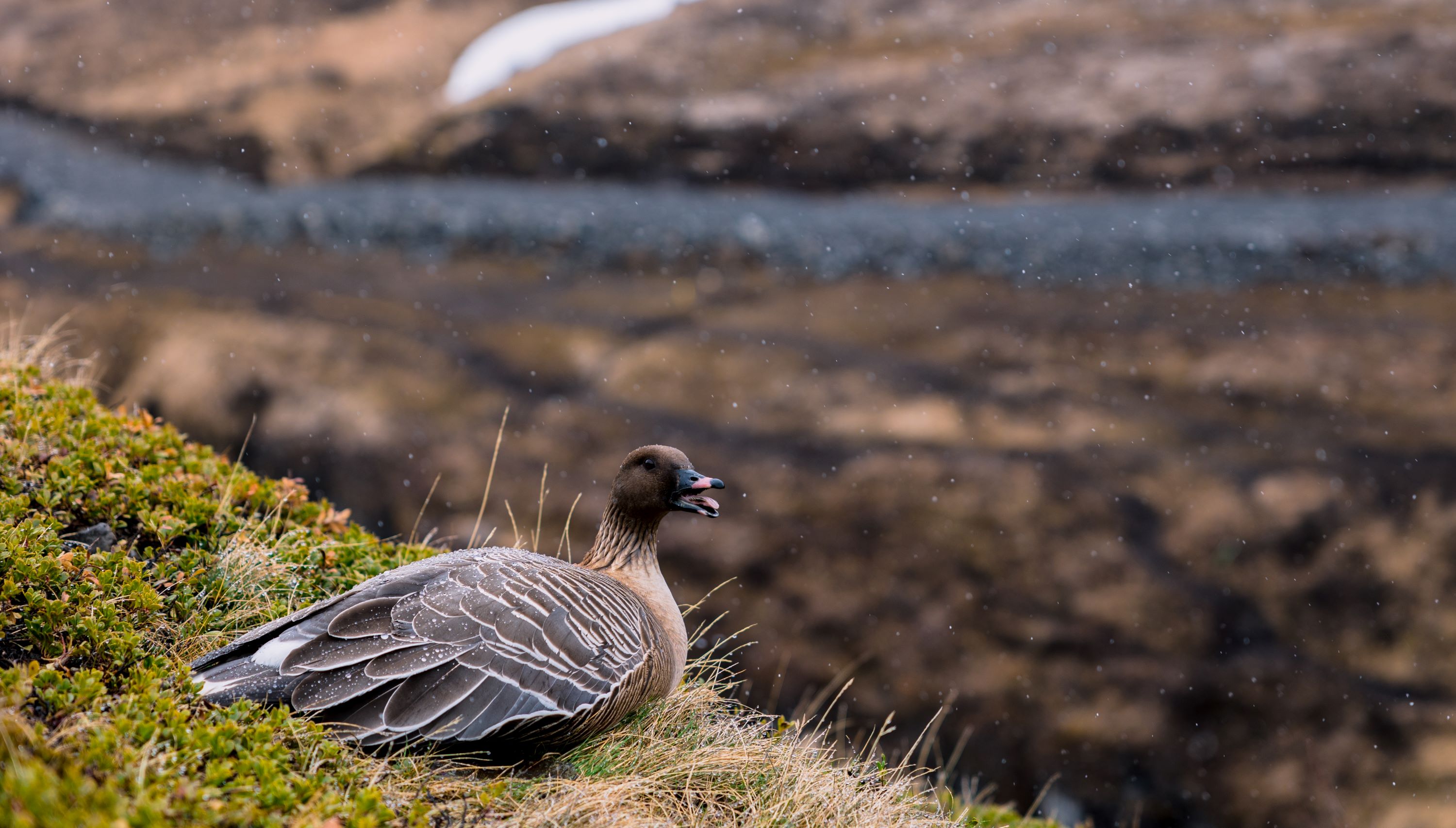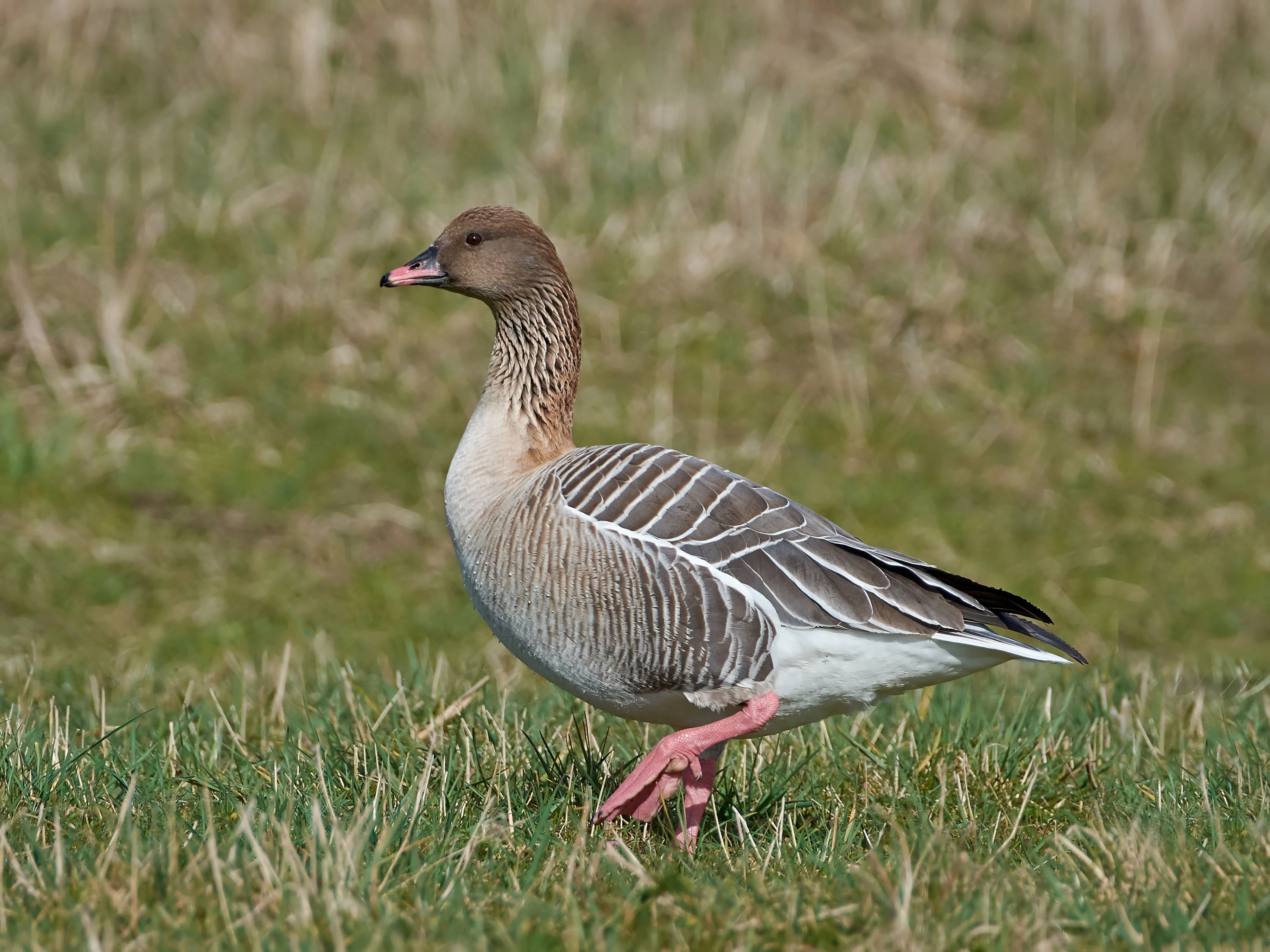
The Pink-footed Goose: A Migrant of the Northern Skies
Introduction
The Pink-footed Goose (Anser brachyrhynchus) is a fascinating species within the Anser genus, known for its distinctive migration patterns and adaptability to varying environments. Although this species is not found in Utah or North America, its life cycle and behaviors provide valuable insights into the dynamics of migratory waterfowl.
Description and Identification
The Pink-footed Goose is a medium-sized bird, smaller than other geese such as the Greylag Goose. It is characterized by a short, pink bill, from which it derives its name, and pink legs. The body plumage is predominantly grey-brown, with a darker head and neck, and a light-colored underbelly. In flight, their wings exhibit a striking contrast of light and dark feathers, making them easily identifiable against the sky.
Habitat and Range
Native to the cooler regions of the North Atlantic, the Pink-footed Goose breeds primarily in Greenland and Iceland. Its preferred breeding habitats are the tundra and moorlands, where it can find isolated areas free from predators. During winter, these geese migrate to the British Isles and Northwestern Europe, particularly to the coastal wetlands, agricultural fields, and estuaries.

Migration Patterns
The migration of the Pink-footed Goose is a notable aspect of its behavior. These birds undertake long journeys between their breeding and wintering grounds, flying in large flocks that can number in the thousands. Their migratory routes are marked by specific stopover sites where they rest and feed before continuing their journey.
Behavior and Social Structure
Pink-footed Geese are social birds, especially outside the breeding season. They form large flocks during migration and in their wintering areas. These flocks are often noisy, with the geese communicating through a range of honks and calls. During the breeding season, they become more territorial and can be seen engaging in various displays to attract mates and ward off rivals.
Diet and Foraging
The diet of the Pink-footed Goose mainly consists of grasses, sedges, and agricultural crops. In their wintering grounds, they often forage in farmlands, feeding on leftover grains and vegetables, which sometimes leads to conflicts with farmers. Their foraging behavior is adapted to the changing availability of food sources throughout their migratory cycle.
Breeding and Nesting
Breeding occurs in the spring and early summer. Nests are built on the ground, typically in sheltered locations near water. The female lays 3-5 eggs, which are incubated for about a month. The goslings are born precocial and are able to leave the nest shortly after hatching.
Conservation Status
The Pink-footed Goose is currently classified as Least Concern by the IUCN. However, they face challenges such as habitat loss and climate change. Conservation efforts focus on protecting their breeding and wintering habitats and ensuring safe migratory routes.
The Pink-footed Goose in Global Birdwatching
While the Pink-footed Goose is not present in Utah or North America, it is a species that highlights the global diversity of waterfowl. For birdwatchers and nature enthusiasts in Utah, understanding the life of this species can enhance their appreciation for the complexity of migratory patterns and the adaptations of species to different environments.
Conclusion
The Pink-footed Goose, with its distinctive appearance and fascinating migratory habits, is a symbol of the resilience and adaptability of avian species. Its story, though distant from the landscapes of Utah, is a part of the broader narrative of bird migration and ecological interconnectedness. For those interested in ornithology, the Pink-footed Goose serves as a reminder of the diversity and wonder of the bird world, inspiring admiration and a deeper understanding of the challenges faced by migratory species.